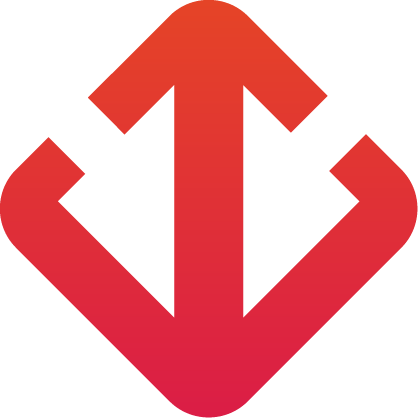
Top Web Application Development Frameworks for 2022: Get the Most Scalability for the Least Cost

Author
Ruchir Kakkad
Date
29 Dec 2021
Time
15 min read
Category
Web Development

Today, millions of web apps are available that make the website industry and design the most influential and growth-driven business. Your website needs to be 360-degree proficient in attracting new customers and satisfying them to keep them coming back for a successful online presence. Several factors determine the outcome of your website, including speed, aesthetics, usability, content, maintenance, device compatibility, the web application development framework you choose, etc.
With the growing website technologies, web developers today rely on building websites with the most popular frameworks/technologies for their online presence to deliver the best results. But choosing the most reliable web application framework is a difficult task as several web application development frameworks are available in the market today. And each framework has its peculiarities, advantages, and disadvantages, as well as the best areas of application. A more thoughtful selection of an executive can accelerate the growth of your web business, and the wrong decision can cost you extra money and time.
Without using a proper web application development framework, new web development can prove to be a nightmare for software designers as they would have to create business logic, databases, security options. And several other things from the start. Several frameworks have been developed to analyze and simplify the web development process, improve flexibility and reduce time to market. Advanced mobile application development The frameworks offer several built-in advantages, such as fast development, foolproof environment, performance, etc.
What is a web framework?
In today’s highly competitive digital world, developers are continually looking for application development frameworks or tools to make their jobs more manageable and reduce application development costs and time.
A web application development framework is like a box of blocks that you can use to create anything you need. You can say a platform with a collection of out-of-the-box programming tools, modules, and core libraries to develop software products. These frameworks provide developers with essential tools and functionality and outline the rules for building applications, websites, services, APIs, and other solutions. Therefore, developers can instantly create your project design and stretch it further according to specified conditions and requirements.
Web application development frameworks are customizable, which means you can use out-of-the-box components and templates and tailor them to your particular needs. You can also implement your code on the platform. A framework can also incorporate code libraries, scripting languages, utility programs, and other software to promote the growth and integration of different components of a large software project.
Best FrontendFrontend Web Application Development Frameworks:
Angular
Angular is an open-source framework written in TypeScript; it builds high-performance and compelling large-scale web applications. Suppose we combine this framework with other web application frameworks. In that case, Angular has obvious advantages while providing a standard structure for developers with a lot of flexibility and a richer set of functions. It allows users to build large applications with two-way binding and dependency.
What makes it popular?
This frame has a two-way data link function. There are several third-party integrations that you can easily add. It requires less code with improved server performance. It is best to create SEO-optimized sites and single-page apps. Improved server performance with faster application prototyping.
Gaps:
It takes time to learn because Angular brings its own rules when developers use it. It has limitations on routers. It has several versions which confuse developers as to which version to operate. Here, a simple application also requires a lot of coding and complexity during installation.
React native
React Native is an open-source, cross-platform application development framework developed and maintained by Facebook. It has become the first choice of developers, helping them build iOS and Android mobile apps seamlessly. Other notable features of React Native include integration with third-party plugins, reusable components, and the development of a component-based GUI for front-end applications.
What makes it popular?
React Native is a framework known for its optimal performance. You can reuse code and other pre-developed components. It has a large community of developers. React Native is a cost-effective solution. It supports third-party plugins.
Gaps:
React Native is still new and immature. If you’re just a newbie to app development, React Native can be hard to learn. This security robustness is missing. React Native takes longer to initialize.
Flutter
Flutter is Google’s open-source framework for building native iOS and Android apps using a single codebase. It is a free and open-source mobile UI framework that uses a different approach to produce apps with a native look and feel. Flutter is a highly reliable and unmatched mobile user interface framework for quickly building great mobile apps by speeding up the development process.
What makes it popular?
Here, developers and designers can quickly identify all changes and improvements to the code immediately in the application. Flutter provides a hot reload feature that is useful in instant updates without plugins. It is very easy to learn a Dart programming language. You can quickly get multiple documents, video lessons, a getting started guide and more from the internet. Flutter offers ready-made and custom widgets that can create an excellent app interface with great looks.
Gaps:
Flutter is still an emerging framework; it is gaining ground among the multiplatform developer community. Flutter has a limited number of packages and plugins. A relatively small community of developers writing in Dart, the programming language used to create Flutter applications. Flutter apps have larger app sizes, and users have limited smartphone storage.
Xamarin
Xamarin is an open-source framework for developing cross-platform applications for iOS, Android, and UWP, from a single shared C # codebase. This framework enables businesses to deliver unique user experiences and native performance to end-users. Xamarin allows developers to build an ecosystem with components, APIs, backend, and more, using libraries, tools, and programming languages backed by an active community.
What makes it popular?
Codesharing, or “write once,” can be used anywhere. Support and full technical support from Microsoft. Minimum time to market. Native integration and performance. Xamarin provides rapid prototyping of the GUI.
Gaps:
The first limitation of Xamarin is the price. Xamarin has some platform-specific limitations. Limited community compared to platform-specific ones. IDE and technological lock-in. Xamarin is not for game development.
Ionic
Ionic is an open-source framework for developing high-quality mobile apps, desktop apps, and progressive web apps using web technologies such as JavaScript, CSS, and HTML. Ionic is a front-end SDK framework that allows developers to build once and run anywhere. It enables the use of several UI elements such as forms, views, filters, action sheets, and navigation menus in the application’s design.
What makes it popular?
Ionic is a single code base across multiple platforms. Ease of learning with the use of popular technologies. It offers a wide range of plugins and integration capabilities. An inclusive choice of rapid prototyping and user interface elements. Strong community.
Gaps:
Lack of performance with native applications. Whenever you develop an application with Ionic, you are required to use No hot reloading. Potential security concerns. The size of the app is a concern.
Express (Node.js)
Express.js is a convenient and easy-to-use framework for Node.js. This framework simplifies the development process by providing valuable tools, packages, plugins, and features. Being flexible, fast, and minimal, Express JS development promotes the rendering of dynamic HTTP objects, and it is cost-effective for web and mobile application development.
What makes it popular?
The Express.js framework allows you to use the same language, i.e., JavaScript, both back and front-end. Express JS is an excellent option for apps that handle many user notifications and requests. Easy integration of third-party services. Provides high performance and the best for developing single-page applications.
Gaps:
It has a complex code structure. Lack of a robust library support system. Middleware is not adequate. It is not efficient in handling CPU-intensive applications. The asynchronous programming model and the API are not stable.
Meteor
Meteor is a popular open-source JavaScript web framework; it is considered one of the best JavaScript frameworks, which is recommended for more accelerated software development. This framework provides an integration capability with supporters like Apache Cordova, AngularJS, React, and others, thus accelerating the overall development of web applications for adaptable platforms.
What makes it popular?
If you are new to JavaScript development, this tool is a complete solution to start your learning process. This framework contains many useful packages and libraries, which help you increase your functionality. Support for server-side debugging. Meteor provides transparent real-time communication between a server and a client.
Gaps:
Excessive threshing. This framework does not support MySQL. It has less scalability. Lack of conventions and structure. Lack of native widget library. The adaptability of inadequate network connection.
Django
Django is a high-level Python web framework written in Python, and it is an extremely popular and comprehensive server-side web framework. This framework focuses on component reusability and connectivity and develops web applications with readable, clean, and maintainable code. It is a framework for strict deadlines.
What makes it popular?
Django has better CDN connectivity and better content handling. One of the most important advantages of Django is that it allows faster development. Developing Django applications is chosen by developers while working with machine learning algorithms. It offers rapid development and processing and also supports MVC programming.
Gaps:
The Django framework has a specific way of describing and performing tasks. It’s not for small projects. This framework is not able to manage several requests simultaneously. Thorough knowledge of this system is required. Not so fast.
NestJS
NestJS is an open-source framework for building efficient and scalable Node.js server-side applications developed with and fully supporting TypeScript. NestJS offers this level of abstraction on top of common Node.js frameworks and describes their APIs to the developer. This framework provides the freedom to use third-party modules and is considered the fastest-growing Node.js framework in TypeScript.
What makes it popular?
Nest JS has a robust technology stack. It offers a fast-processing, event-based model. It has scalable technology for microservices. NestJS is a great way to create an MVP as quickly as possible. It provides a short page load time and supports demand.
Gaps:
Cost of flexibility, Next JS does not offer multiple integrated homepages. If you need to use Next JS to build an online store, you need a dedicated person to handle the management and development. NestJS is limited to using its file-based router, and you cannot change how it works with routes. Few plugins and lack of a built-in state manager.
Koa
Koa is a new web framework that aims to be smaller, more expressive, and powerful and has a more solid foundation for APIs and web applications. Koa allows you to leave reminders and significantly improves error handling, and Koa provides an elegant set of methods that make writing servers secure and enjoyable.
What makes it popular?
This executive has a proven development team. Koa is exceptionally light. Sync / await keywords are supported and have transcended older generator functions.
Gaps:
It has a relatively small community. This framework is not compatible with express style middleware. It leaves little room for creative input and discussion.
Conclusion
This article has discussed the ten most requested web application development frameworks. These frameworks have their strengths and weaknesses and shine in their particular use case. The combined power of the backend, front-end and accelerators will provide your business with the edge and edge it needs.
Executives have an essential perspective on the day-to-day work of a designer. And if you don’t plan, you’ll have difficulty and experience keeping up with your opponents. Therefore, you should always be ready with your plan at the source and always choose a reliable web development organization to help you select the proper framework for your project. Selecting the most beneficial web development framework for a website is usually based on the details and aspects of your specific project. Every business and person think of a web application framework with different influences. So you have to make your decision based on the needs of your business.
Frequently Asked Questions (FAQ)
1) What are the different types of web frameworks?
There are mainly two types of frameworks available: the front and backend. The focus of a backend framework is on the internal part of the application. In contrast, the front-end framework works on the external section of the web application, mainly what customers and users see when they open an application.
2) What are the most used web frameworks?
Developer teams always use the best website development frameworks to provide a proper way to develop and deploy web applications. The top three most used web frameworks by developers around the world are React (35.9%), jQuery (43.3%), and Angular (25.1%). This list goes further, including Express, ASP.NET, Spring, ASP.NET Core, etc.
3) Which web framework is the easiest to learn?
Different frameworks have different learning curves; some of them can be mastered in a short time, while others require more skill and technical effort. They aim for simplicity to make the development process more transparent.
4) What is the most reliable web application framework for web design?
Each framework has its uniqueness, which is why developers adopt it. The most popular front-end framework is jQuery, followed by React and Angular. Determining the most reliable development framework depends entirely on your project and business requirements.
You Might Also Like
When it comes to web development, PHP frameworks are the utilized solutions. Despite the fact that there are other PHP frameworks. Symfony and Laravel are the best options. They’re popular for a multitude of reasons, including their great code, which allows developers to create incredible applications. Create a web application to bring your brand’s identity […]
Technology has improved leaps and bounds. What used to be a dream a couple of years ago is a reality. This is because people are continuously looking for new things. They want to evolve and make things better for themselves and the world at large. In recent times, we’ve seen a 360° transformation in how […]
Laravel has been noted as one of the best framework options to develop a web application, and rightfully so. As per the official website, the web development framework is an open-source PHP web application framework. The syntax is especially simple and easy. It works on MVC (model-view-controller), an architectural pattern to separate the model, the […]
Let’s Build The Future
Have An Idea? Work With Us And See How It Goes. We Promise To Go The Extra Mile For Every Project That We Take Onboard.



